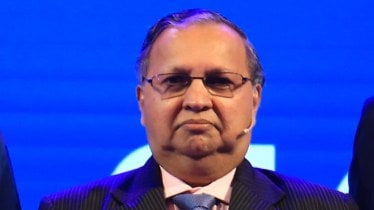The incidence of diabetes, a non-communicable disease (NCD) , is increasing across the world. According to the World Health Organization (WHO), diabetes is a chronic disease that occurs either when the pancreas does not produce enough insulin or when the body cannot effectively use the insulin it produces.
In India, there are estimated 77 million people above the age of 18 years are suffering from diabetes (type 2) and nearly 25 million are prediabetics (at a higher risk of developing diabetes in near future). More than 50% of people are unaware of their diabetic status which leads to health complications if not detected and treated early, as per WHO data.
With the advancement in medical research, there are now various ways to treat and manage diabetes. However, there are still numerous challenges.
On Thursday, Novo Nordisk, a Denmark-based pharmaceutical company which is a leading player in the insulin market, completed 100 years. During its global anniversary event, Financial Express.com got the opportunity to interview leading endocrinologist, Dr. K M Prasanna Kumar. Excerpts:
What are the current challenges that India is facing with respect to diabetes care and treatment?
The first thing is detection. In India, in cities for every two detected diabetes cases, there is one undetected diabetes case. In villages, for every detected diabetes, there is one undetected diabetes. So, this is the challenge. Diabetes is a silent secret threat. It doesn’t have symptoms. People shouldn’t wait for symptoms. In 80-90 percent of cases when diabetes is detected there is no symptom. Another challenge is, people don’t adhere to the doctor’s advice after diagnosis. 65 percent of diabetic patients in India, have not reached the target control. People also tend to avoid other comorbidities like high blood pressure and cholesterol. If these issues are avoided, they can be dangerous.
What are the implications of delayed diagnosis in diabetes?
When you diagnose diabetes early, then you can manage with minimal measures. But when the patient comes too late, then you will need multiple medication. Sometimes they have so high blood sugar, that they have to start insulin right away. When it is too much delay, then there organs will be affected. Everyone after 30 years they should get themselves tested for blood pressure, cholesterol and diabetes.
What are some recent trends with respect to diabetes diagnosis and management in India? Are there any new causal factors?
50 years back, we were only doing urine sugar testing for diabetes. Later, we started using blood samples for testing diabetes. Then we started doing GTT in which people give their samples with empty stomach. Today, none of them are necessary. One diagnosis from simple HBA1C or A1C that shows three months average…if less than 5.8 then non-diabetic…from 5.8 to 6.4 it is pre-diabetic…more than 6.5 is diabetes. From complex tests to simple tests we have come a long way. Now, there are many point-of-care tests too. You can check blood pressure at home too. Now, there are many ways to get timely diagnosis but it is not happening due to people’s attitude towards their health. There is still a need to make people aware about the disease and its impact.
What is the role of obesity in developing diabetes? Do you think there is correlation between them? What is the status of this correlation in India?
More than a correlation its an association as both of them are associated with each other. That’s why it is also called diabesity. Around 65 percent of diabetic patients are obese. Earlier it was only 10-20 percent. As obesity is increasing in the community, there will be an increase in diabetes. When a person has more fat, fat is resistant to insulin. So, what happens is a person who is fat, he has insulin resistance. Though the body produces insulin, it won’t be sufficient. The obesity among children is increasing due to poor lifestyle. When address the obesity factor, diabetes will come down.
How diabetes affects various parts of the body?
When we are born our sugar is 100, cholesterol is 100 and blood pressure is 100. As you age, the pancreas become weak and you may get diabetes. Then cholesterol becomes 200, and BP also increases. Higher blood pressure, higher cholesterol the effect is on eye, heart, kidney and brain. Higher blood sugar leads to decrease in vision, kidney failure and numbness and tingliness. Heart will also be affected, you can get strokes too. If blood vessels in the legs are affected you may get gangrene.
Any word of advice for our readers?
Any chronic disease including diabetes, it is your responsibility. The doctor can only give the patient advice. People need to be desciplined. They should monitor the parameters of their body frequently, measure their blood sugar levels, go to the doctor whenever they feel unwell or for regular checkup and maintain adherence and you will live as long as a non-diabetic patient.
